 “In this, one of the most epic of Adam’s landscapes, humanity is signalled by a field of scattered crosses in the near foreground.
“In this, one of the most epic of Adam’s landscapes, humanity is signalled by a field of scattered crosses in the near foreground.
The settlement itself makes an irregular diminishing rhythm from left to right, in contrast to the flowing horizontals of the mountain range and the swift, painterly markings in the sky.
The whole of this musicality is related to the imperceptible slowness of the moon rising.” – Ian Jeffrey.
I don’t know whether I agree with that, but it’s very nice.
It’s called ‘Moonrise, Hernandez, New Mexico’, and it’s by Ansel Adams, probably his most famous picture. Adams is widely regarded as THE landscape photographer.
Legend has it that the picture above was taken at the end of a very frustrating day, he’s been trying to capture the beauty of the US landscape for the Department of the Interior, but it’d in failed exposures and missed opportunities.
Then he spotted the scene, not a problem today, just whip out your iPhone and bingo! (Or, if you’re on Facebook, stick your face in front of that moon, pull a funny face, then bingo).
But in 1941 it wasn’t that easy.
For a start, his camera was the size of a small suitcase, every shot required loading a separate sheet of film, but by far the most tricky element was the maths.
Adams had perfected a new style of broad, sharp, long-exposure landscape photography. Assessing the light to time to aperture ratio was crucial to this style of photography, so a light meter was vital.
But once he’d screeched his car to a halt, set up his suitcase-sized camera he couldn’t find his flippin’ light meter.
The sun’s going down fast, the light’s changing, it was already going to be a challenge, now it’s an impossibility.
But Adams knew his stuff, so he thought he’d give it a go.
He knew that the moon threw off approximately 250 c/ft2 of luminescence, so working with this figure, he calculated that a shot such as this would require a one-second exposure and an aperture setting of f/32.
Not convinced he’d got it, he started loading up more film, but by the time he’d finished the sun and the moment had vanished.
The detail, composition and technical brilliance of the shot influenced a generation of landscape photographers.
Without the technique there would be no picture.
John Margolies wasn’t great technically.
To me, his images often look too dark, there’s no discernible composition, some look wonky, not cool, deliberately angled, just not lined up properly.
They look like just recorded what happened to be in front of him.
The things he chose to record were the things that his parents wouldn’t let him study as a kid. Whilst on family road trips he’d see these odd, quirky bits of American commercialism and would ask to stop and look, only to be turned down, “My parents’ generation thought it was the ugliest stuff in the world, I liked places where everything was screaming for attention: ‘Look at me. Look at me.’”
So when he grew up he’d rent Cadillacs and head for the flyover States, often for as much as eight weeks at a time.
When he wasn’t in a Cadillac he was the editor at Architectural Record, but his views of what was or wasn’t of value didn’t always go down well with the establishment “they think Toronto’s City Hall is important, but not those wonderful gnome’s-castle gas stations in Toronto.”
When he put on a show of his pictures in 1970, they were appalled at his cheap 35mm images of the crass commercialism of America. Where’s the technique?
As much as I admire Ansel Adams’ technically perfect pictures of mountains, I can only look at a handful before I start wondering who the next Arsenal manager might be or what Donald Trump has been up to, whereas I can spend at all day looking at cafes in Utah shaped like Guppy.
They’re just more human.
Nb. Postcards sold by Margolies. 




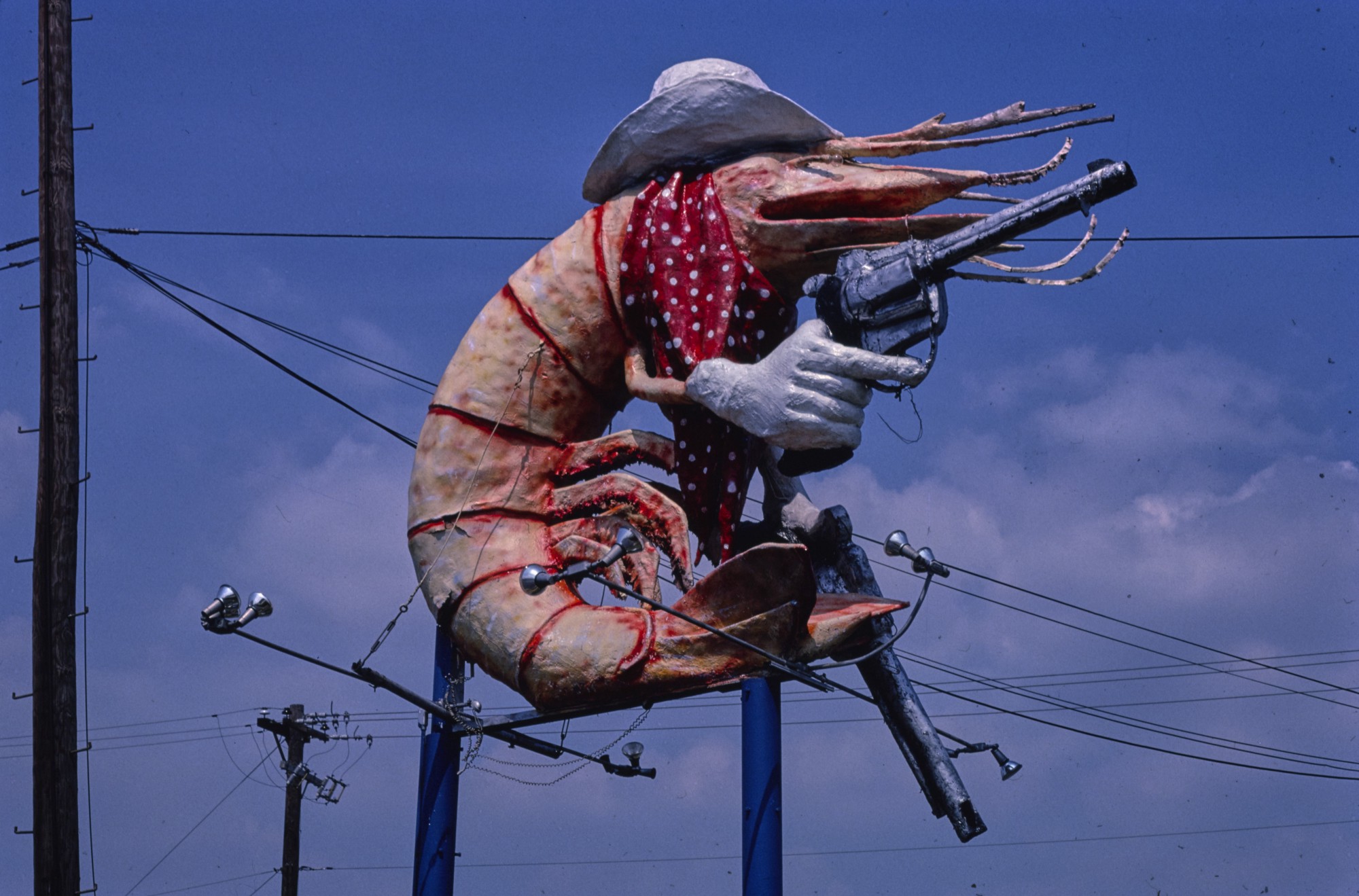





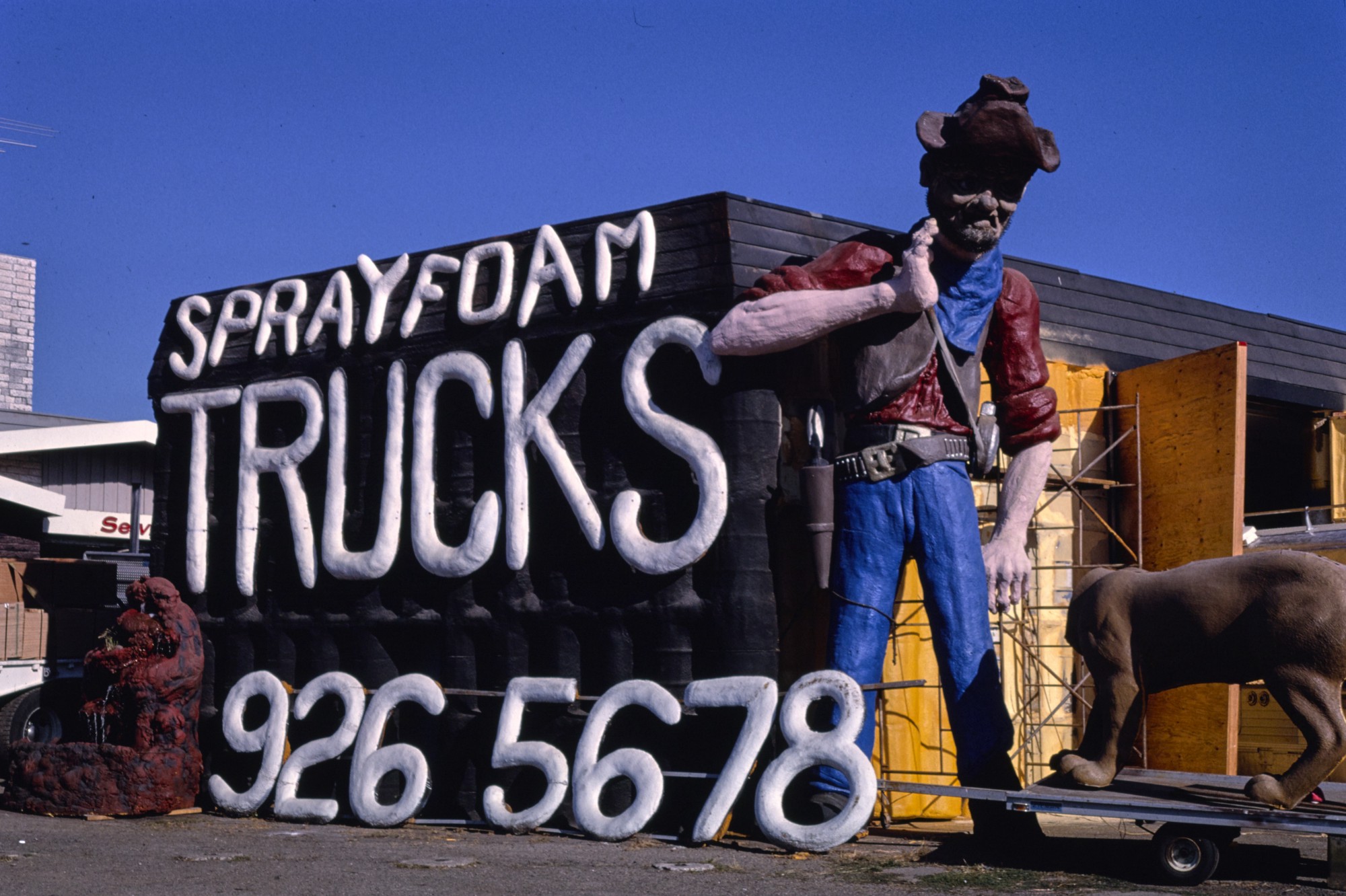





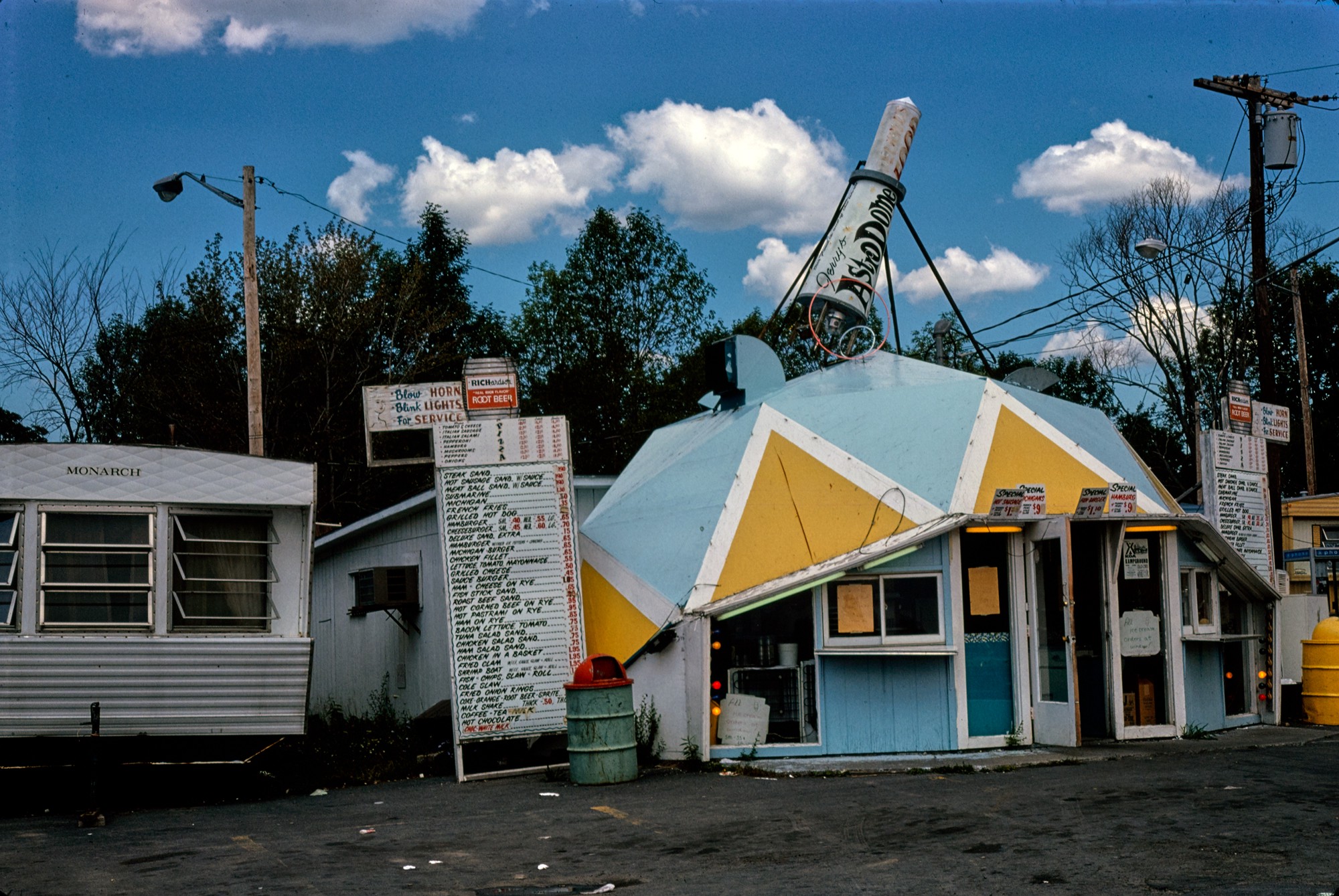


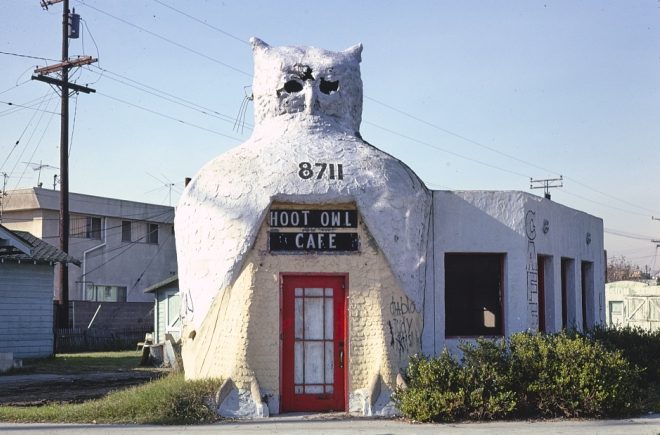







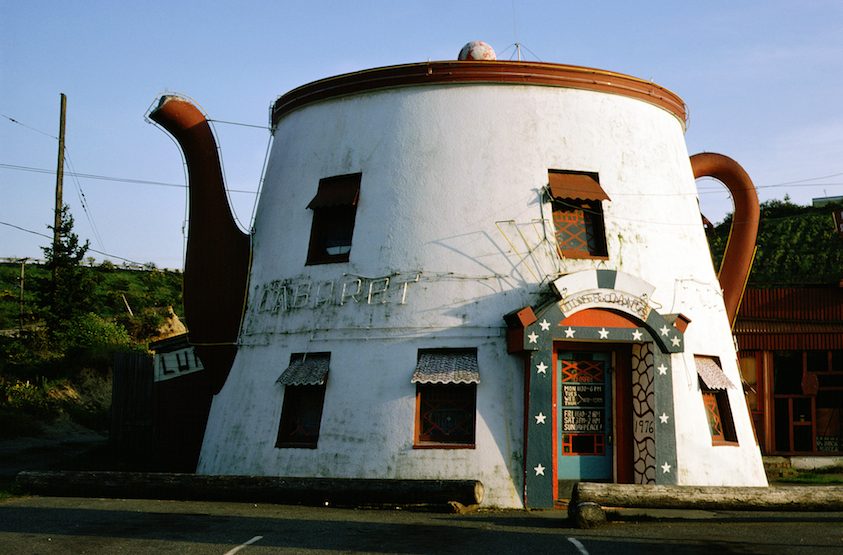

















Yep. Magolies every time. And Allegri by all accounts.
I remember seeing a joint Ansel Adams and William Eggleston exhibition at the South Bank, Adams was packed but I breezed through it, the Eggleston side by comparison was empty and I stayed all afternoon. Technically perfect Adams maybe but I find the images all the same and I feel I’ve seen everyone a million times on a gift shop calendar.